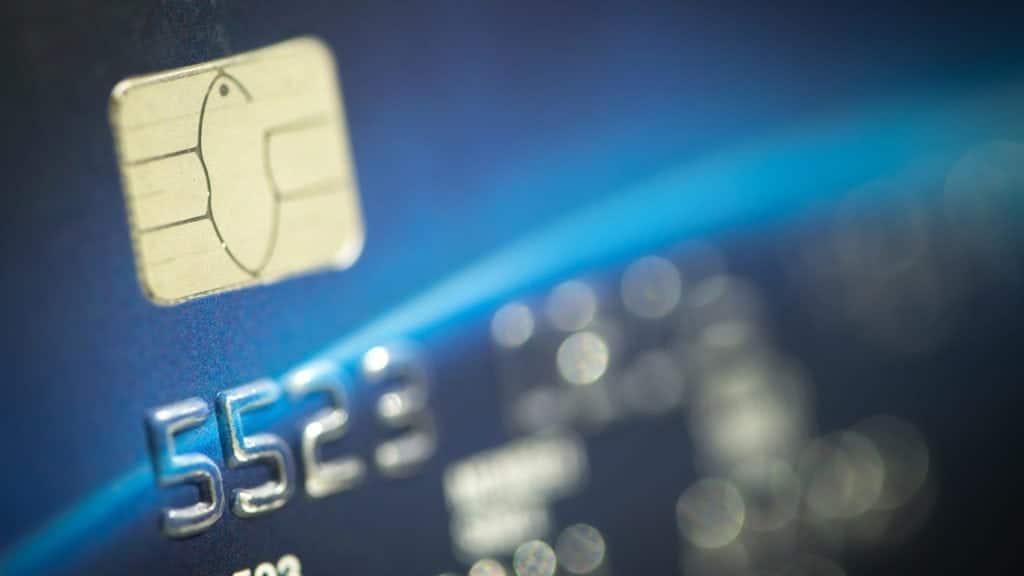High-Risk Business with Stripe, PayPal, Square, Venmo
![AdobeStock_384632360-min[1] high-risk merchant accounts](http://mypaymentsavvy.com/wp-content/uploads/2023/05/AdobeStock_384632360-min1.jpeg)
TABLE OF CONTENTS
Certain activities, or the industry you work in, may cause payment processors to characterize your merchant account as high risk. It isn’t uncommon for some businesses to process online payments and get higher-than-average returns, but your reputation and industry play an important role.
Having your merchant account suspended will undoubtedly lead to revenue loss and customer satisfaction, so knowing how to avoid the ban is pivotal.
This article discusses what high-risk merchant accounts are, the reasons why different payment processing companies may drop your account, and how to avoid it altogether.
What Is a High-Risk Merchant Account?
If your payment processor determines your business is involved in fraudulent activities, has a high rate of chargebacks, or has a high volume of returns, it will flag you as high risk. Being high-risk leads to more frequent audits and even higher fees, while some payment processors may entirely shut your account.
A high-risk merchant account is an inconvenience for any payment processor, as illegal activities may jeopardize their reputation and lead to legal challenges.
Therefore, high-risk merchants usually have a risk of having a limit on deposits, higher fees, as well as longer processing times.
However, working in certain industries may automatically flag your merchant account as high-risk, even if you’re not doing anything illegal. Knowing that your niche will face higher charges and limitations will help you avoid those disadvantages that restrict your running operations.
In fact, some business owners seek payment processors that specialize in their unique industries and are ready to maintain smooth operations.
Most Common Reasons for Being Flagged as High-Risk
Every merchant processor has its own criteria for high-risk businesses, but the general guidelines are:
- High chargeback rate: Most merchants that receive a high volume of chargebacks are considered high risk.
- Recurring payments: Specific merchant accounts that have recurring bills or automatic subscription services activated after the trial period can also be flagged as high risk.
- Increased fraud levels: If a merchant processor finds out that the merchant account has been involved in money laundering, selling unregulated or banned items, or any other illegal activity, the account would get banned.
- Questionable reputation: Merchant accounts that receive numerous complaints from customers and financial institutions are likely to be suspended.
- High volume of transactions: Companies that process high volume of transactions per month may also be characterized as high-risk merchant accounts.
- Accepting international transactions: If a company does business in countries that are considered to have a risk of fraud by the payment processing provider, that merchant account can also be categorized as high risk.
Examples of High-Risk Businesses
Some merchant accounts that are in compliance with all the regulations and follow the terms set by their payment processing company may still be determined as high risk.
Knowing your niche may face these payment processing challenges will help you run your business smoothly and continue accepting payments online without delays.
The following industries are considered high-risk:
- Adult entertainment
- CBD, e-cigarette, and vape shops
- Gambling
- Debt collection
- Firearms sellers
- Online dating
- E-commerce
- Electronic shops
- Subscription-based service providers
- Travel agencies
Stripe High-Risk Business
Reasons for Stripe to Suspend Merchant Accounts
Stripe has a strict approach to businesses operating in selected countries and what products are prohibited to sell using the merchant processor. An example of this is selling alcohol in India or adult toys in Singapore and Malaysia. Going against Stripe’s policy is likely to get you banned from the platform.
Stripe runs check-ups on businesses that they think lack information or may be involved in illegal activities. Therefore, ignoring Stripe’s request to clarify or provide answers regarding your company may cause problems with payment processing until the issues are resolved.
Apart from suspicious activity and rescripted products, Stripe is likely to terminate a merchant account that has a bad reputation and doesn’t deliver sold goods to customers.
How to Avoid Ban by Stripe
To avoid suspension, you should always verify the following information on Stripe:
- Business identification with address and website ownership
- Business bank account information
- Supportability of your business
- The risk level of your business
Stripe has a list of restricted businesses for which they do not accept payments. However, some niches are allowed to use Stripe merchant accounts after being investigated and approved by the merchant processor.
Another thing you should do to avoid being banned is to accurately and clearly describe your products and update your marketing materials regularly.
Lastly, you should also ensure your website accepts credit and debit cards securely and that you have no access to customers’ personal information.
High-Risk PayPal Payment Account
Reasons PayPal Drops Payment Accounts
Any PayPal high-risk merchant account is usually at a disadvantage when it comes to processing payments.
The payment processor creates certain limitations and obstacles, making business operation processes bumpier. Some of such dents include greater fees and chargeback costs, a higher chance of having your merchant account frozen, and significant deposit delays.
The most common reason for PayPal to limit high-risk accounts is a high chargeback ratio. Ideally, every payment processor wants to deal with as few chargebacks as possible. However, when the ratio is over 2%, it’s an instant red flag for any account provider, including PayPal.
The same can apply if a company processes a small number of big transactions per month instead of dealing with smaller amounts but in a much higher quantity of transactions.
How to Avoid Ban by PayPal
There are a few things you can do to reduce the risks of owning a high-risk merchant account:
- Always inform PayPal about an upcoming large deposit or withdrawal beforehand.
- Verify your PayPal merchant account information and always keep it up to date.
- Create a clear and accurate return policy for your customers to reduce the ratio of chargebacks.
- Maintain an accepted PayPal credit score.
Square High-Risk Business
Reasons for Dropped Payment Accounts
Like other payment processors, Square labels certain businesses as high-risk not because of illegal activity but because of the industry they work in. According to Square’s policy, the provider will not support merchant accounts that accept payments for selling adult entertainment products, firearms, drugs, and many more. Violating the policy will lead to the closure of your account.
How to Avoid Ban by Square
Square takes great pride in keeping its platform safe for merchants and their clients. The best way to avoid a ban by Square is to adhere to its rules and guidelines. This means if the account provider notices something out of the ordinary, it will take quick measures and possibly freeze your transaction until the case is resolved.
Venmo High-Risk Merchant Accounts
Reasons Your Merchant Account Is Dropped
The obvious reason why a high-risk merchant account is frozen by Venmo is to protect its users. If Venmo suspects a business has acted against the provider’s policies, it will flag the company or even suspend it. The payment processor may also stop current transactions and request additional documentation.
How to Avoid Ban by Venmo
It may be confusing trying to avoid being banned on Venmo, since even private users sometimes have their accounts frozen. The first thing you should do is to always follow the provider’s policy and rules. If you’re planning on processing a big transaction, always inform Venmo about it beforehand, as your merchant account may be flagged or immediately frozen due to suspicious activity. Otherwise, Venmo can hold money in your account for up to 180 days if you’ve broken its rules.
How to Recover High-Risk Merchant Accounts
IMG: high-risk merchants
Most businesses can have their accounts reinstated if they follow a set of guidelines. Before we jump into them, here is a recap of best practices every high-risk merchant account should adhere to:
- Adopt a good business model: When running your business on any of the payment processing services, you should adjust your business model to the policies of the service you use. Always read the Terms & Conditions before activating your merchant account so that you are aware of existing rules to follow.
- Verify your customers: It would be incredibly difficult to check every customer one by one, so adopt a system that would automatically verify your customers’ information, such as email, physical address, and phone number. With the correct information provided, you will also maintain excellent customer service no matter what.
- Update records: Whether you have a low or high-risk merchant account, you should keep records of every transaction and chargeback. Moreover, whenever there is a return or a chargeback, make sure to list a specific reason or support it with any documentation.
- Prevent fraudulent activity: An inexperienced e-commerce owner may not recognize fraud at once, so it’s best to employ software that will prevent others from benefiting from your business. Detection software is handy for preventing chargebacks; hence, it can save you money in the long run.
Last but not least, whenever you are faced with a chargeback or a dispute on any of the payment processing services, make sure to respond promptly and show proof of purchase or other evidence in case a chargeback is unjustified.
Stripe Merchant Account
Unfortunately, when Stripe shuts down a merchant account, most of the time, it is an irreversible decision. You can try contacting Stripe customer support, but for the most part, your account might not be recovered.
Paypal Merchant Account
Unlike Stripe, a PayPal merchant account has a higher chance of recovery. Once your PayPal account is dropped, you should immediately contact customer support and find out the reason behind your suspension. For an obvious reason, when your account is reactivated, you shouldn’t make the same mistake.
PayPal allows suspended high-risk merchant accounts to file an appeal. This action will push PayPal to investigate your case deeper and reverse the decision.
However, if your credit score is poor and you’ve had too many chargebacks, it might be unlikely to reinstate your PayPal merchant account.
Square Merchant Account
Depending on the nature of your business, you can contact customer support for Square and request the reactivation of your account. Square should provide you with the reason why your account was dropped, take another look at your case, and decide whether to return the account or not. However, the decision will not be instant; on the contrary, it can take up to 90 days to finalize your request.
Venmo Merchant Account
When your account is frozen, Venmo always sends an email to inform you about their decision. You need to reply to that email and request to unfreeze your account. It can be the case that the provider will ask for extra documentation or will need to screen your business activities before giving you access. You can also call Venmo directly or contact them through the app.
Final Thoughts
Being classified as high-risk isn’t what merchants wish to see. However, some industries automatically fall under this category. Ignoring the policy is what usually gets many companies banned from using a selected payment processor. However, it shouldn’t be your case.
Understanding how your business operates and what action may lead to suspension will help you avoid breaking the rules and keep your business active.
When running an ecommerce business, it is natural to receive chargebacks and returns, the way you handle them is key here. Paypal and other aggregate merchant providers list their requirements, so following those will minimize the risks of being banned.
Payment Savvy believes that having a high-risk merchant account doesn’t mean you’re involved in illegal activities. Some industries are just more regulated than others. We value every client and offer payment solutions to suit your business and budget.
Explore our custom payment solutions to run your company smoothly and risk-free.
Frequently Asked Questions
What is considered a high volume of chargebacks?
A merchant account that has excessive chargebacks may be considered high risk. Sprite’s example of it is as follows:
- If a merchant account has 6 chargebacks out of 125 Mastercard transactions, the ratio equals 4.8% (6/125).
- The amount of chargebacks is as high as $6250, so Mastercard would qualify the merchant as MATCH (Mastercard Alert to Control High-Risk Merchants).
What is a dedicated high-risk merchant?
A dedicated high-risk merchant is a business that is considered to have a higher risk of fraud or chargebacks. This often means that the merchant is involved in unique industries such as online gambling, adult entertainment, pharmaceuticals, or firearms, which are known to have a higher likelihood of disputes and legal issues.



